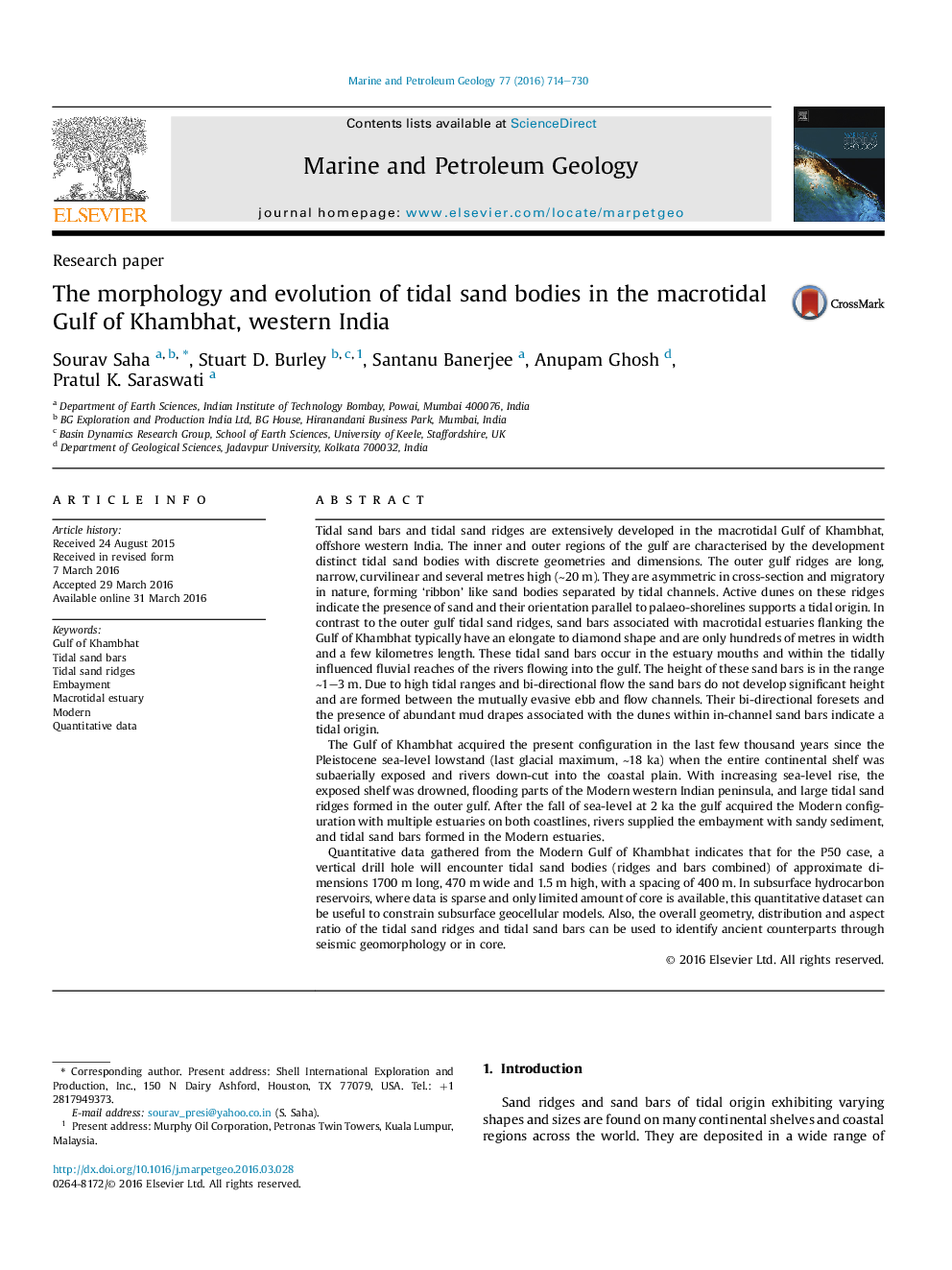| Article ID | Journal | Published Year | Pages | File Type |
|---|---|---|---|---|
| 6434606 | Marine and Petroleum Geology | 2016 | 17 Pages |
â¢Tidal sand ridges and tidal sand bars are extensively developed in the macrotidal Gulf of Khambhat.â¢The tidal sand ridges in the outer gulf are long (30-60 km), narrow (2-10 km), curvilinear and up to 20 m high.â¢Tidal sand bars in the inner gulf are diamond shaped and up to 7 km in length, 300-1000 m in width and 1-3 m in height.â¢The Gulf of Khambhat developed from a subaerially exposed coastal plain (18-15 ka) to the Modern estuarine embayment.â¢Quantitative data on Modern sand ridge and bar dimensions is useful for predicting and constraining subsurface counterparts.
Tidal sand bars and tidal sand ridges are extensively developed in the macrotidal Gulf of Khambhat, offshore western India. The inner and outer regions of the gulf are characterised by the development distinct tidal sand bodies with discrete geometries and dimensions. The outer gulf ridges are long, narrow, curvilinear and several metres high (â¼20 m). They are asymmetric in cross-section and migratory in nature, forming 'ribbon' like sand bodies separated by tidal channels. Active dunes on these ridges indicate the presence of sand and their orientation parallel to palaeo-shorelines supports a tidal origin. In contrast to the outer gulf tidal sand ridges, sand bars associated with macrotidal estuaries flanking the Gulf of Khambhat typically have an elongate to diamond shape and are only hundreds of metres in width and a few kilometres length. These tidal sand bars occur in the estuary mouths and within the tidally influenced fluvial reaches of the rivers flowing into the gulf. The height of these sand bars is in the range â¼1-3 m. Due to high tidal ranges and bi-directional flow the sand bars do not develop significant height and are formed between the mutually evasive ebb and flow channels. Their bi-directional foresets and the presence of abundant mud drapes associated with the dunes within in-channel sand bars indicate a tidal origin.The Gulf of Khambhat acquired the present configuration in the last few thousand years since the Pleistocene sea-level lowstand (last glacial maximum, â¼18 ka) when the entire continental shelf was subaerially exposed and rivers down-cut into the coastal plain. With increasing sea-level rise, the exposed shelf was drowned, flooding parts of the Modern western Indian peninsula, and large tidal sand ridges formed in the outer gulf. After the fall of sea-level at 2 ka the gulf acquired the Modern configuration with multiple estuaries on both coastlines, rivers supplied the embayment with sandy sediment, and tidal sand bars formed in the Modern estuaries.Quantitative data gathered from the Modern Gulf of Khambhat indicates that for the P50 case, a vertical drill hole will encounter tidal sand bodies (ridges and bars combined) of approximate dimensions 1700 m long, 470 m wide and 1.5 m high, with a spacing of 400 m. In subsurface hydrocarbon reservoirs, where data is sparse and only limited amount of core is available, this quantitative dataset can be useful to constrain subsurface geocellular models. Also, the overall geometry, distribution and aspect ratio of the tidal sand ridges and tidal sand bars can be used to identify ancient counterparts through seismic geomorphology or in core.
